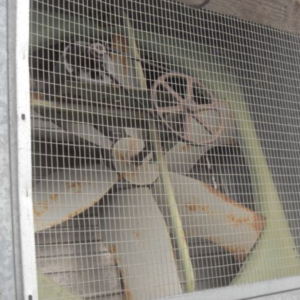Ventilation Recommendations
Ventilation
Ventilation includes systems to move air in and out of produce storage areas as well as occupied areas. Measures to save energy will typically require capital expenditures, therefore these measures are best applied to areas where the fans operate for more than 20 hours weekly, on average. The measures below are listed from least to most costly, though cost will vary depending on the details for a specific farm.
No-cost energy assessments can help you identify what measures are best suited for your operations considering costs and expected benefits. Request an energy assessment by completing our interest form.
Continue reading to learn about reducing ventilation energy costs in the following areas:

Ventilation Controls
A simple energy-saving change is to setup controls so that fans only run when needed.
Oftentimes the cheapest way to reduce ventilation energy costs is to manage fan scheduling using controls. Controls can be as simple as a timer or as complex as a computer-based system. In most cases, the simpler and cheaper timer control is preferable. In some cases, simple thermostats can be added in addition to a timer. This will avoid over-operation of the fan when required temperatures are met.
Variable Speed Drives
A good way to reduce motor energy costs without significant capital expenditure is to install variable speed drives.
Motors typically do not require their full capacity. There are times when full capacity may be needed, but most of the time motors are only partially loaded. Due to electrical dynamics, motors operating at partial load waste a disproportionate amount of energy. Variable speed drives (also known as adjustable speed drives) greatly reduce these unnecessary energy losses by properly matching the motor speed to the required load. The drives are available for a wide range of applications and horsepower ratings. They are installed near the motor and use controls to determine the appropriate speed to meet the load.
High Efficiency Fans
The most impactful way to reduce fan energy costs is through significant capital expenditure to replace the fans with high-efficiency fan systems.
This involves replacing the fans with new high-efficiency fans as measured on a cfm/Watt basis. When purchasing fans, determine the required cfm, obtain cfm/Watt fan rating information from the manufacturer, and then choose the fans with the highest cfm/Watt ratings.
Fan ratings are available from BESS Lab. In the BESS fan performance database, certain old fans are not represented, and degradation is not accounted for in the lab results. In looking up efficiency for old or degraded fans, results should be selected based on the most representative match. Fan degradation can be observed as equipment damage, vibration, motor heat, and noise. Degradation in agricultural fans can range from 12-55% (source: Chai et al. 2010).
